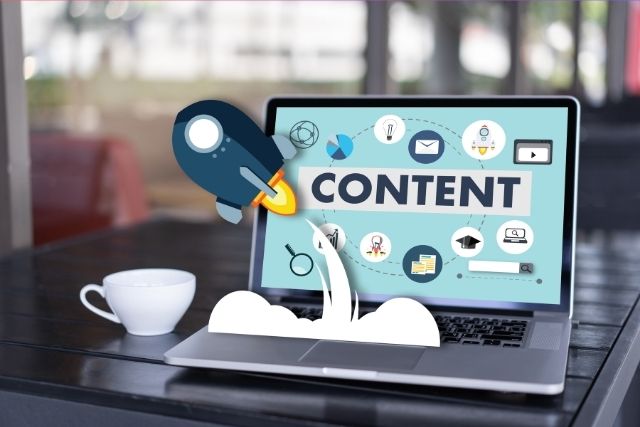Email marketing is One of the most significant elements of a productive digital marketing plan. With the power to reach a broad audience and engage with potential customers, it is an indispensable tool for businesses of all sizes. However, creating a successful email marketing Strategy needs meticulous preparation and implementation. The fundamentals of email marketing will be covered in this article. The components of a successful strategy and how to measure its success.
Understanding the Basics of Email Marketing
Businesses may use effective email marketing instruments to reach their target audience through targeted messages sent via email. These messages can take various forms, including promotional offers, newsletters, important updates, and announcements. Businesses may increase productivity by using email. Effectively communicate and engage with their customers.
Defining Email Marketing
Sending targeted emails to a group of people is known as email marketing. These messages range from promotional offers and newsletters to important updates and announcements. Email marketing aims to establish a rapport with the recipients and encourage them to act, such as purchasing or signing up for a service.
One of email marketing’s main benefits is its capacity to reach a broad audience. With billions of people using email daily, businesses have the opportunity to connect with a large number of potential customers. This broad reach makes email marketing a cost-effective and practical approach to advertising goods and services.
Email marketing’s significance in the modern digital era
In today’s fast-paced digital landscape, email continues to be one of the most effective means of communication. With billions of people using email daily, it provides businesses with direct contact with their target audience. Unlike social media or other online platforms, email allows companies to reach their customers directly in their inboxes, ensuring their message is seen.
Furthermore, email marketing allows businesses to personalize and tailor their messages to their subscribers’ interests and needs. Companies may send targeted emails by segmenting their email list. Make sure the receivers will find their emails valuable and relevant. This personalization can significantly enhance client response to communications, increasing engagement and conversion rates tailored to their preferences.
One other benefit of email marketing is that it may track and measure results. With email marketing software, businesses can track open, click-through, and conversion rates effortlessly. This data provides valuable insights. It gives insight into email marketing effectiveness and enables firms to make data-driven decisions to optimize their email marketing strategy.
By leveraging the broad reach of email and personalizing messages, businesses can effectively engage with their customers and achieve their marketing goals.
Components of an Effective Email Marketing Strategy
Building a Quality Email List
One of the fundamental elements of a successful email marketing strategy is having a high-quality email list. It involves obtaining permission from individuals to send them emails and ensuring that the subscribers are genuinely interested in the content.
Building a quality email list is a process that requires careful planning and execution. Businesses can start by creating an attractive and user-friendly subscription form on their website. This form should communicate the value subscribers will receive by joining the email list, whether exclusive content, special discounts, or insider information.
Once visitors have subscribed, they must nurture the relationship by sending them a welcome email. This email should express gratitude for their subscription and give them a quick rundown of what they may anticipate from future emails. It’s also an excellent opportunity to ask subscribers to add the sender’s email address to their contacts to ensure deliverability.
Regularly cleaning the email list is another crucial step in maintaining its quality. Removing inactive or unengaged subscribers helps improve deliverability rates and ensures the content reaches those genuinely interested. Keeping track of data like open rates and click-through rates
can help. And engagement metrics to identify subscribers who have not interacted with the emails for a certain period.

Crafting Compelling Email Content
The content of your emails greatly influences your email marketing activities’ efficiency. It is crucial to produce entertaining, helpful, and pertinent content.
When crafting email content, it’s essential to understand the target audience and their needs. Analyzing client data and doing market research might yield insight into their preferences and interests. This information can then be used to create content that resonates with the subscribers and addresses their pain points.
Using demographic, behavioral, and other criteria to divide your email list and preferences allows you to offer personalized content that speaks to every subscriber. By tailoring the content to specific segments, you can increase the relevancy and effectiveness of your emails. For example, suppose you have a piece of subscribers who have shown interest in a particular product. In that case, you can send them personalized product recommendations or exclusive offers related to that product.
Internet marketing biz lead virtual summit 2023
In addition to segmenting your email list, it offers personalized content that speaks to every subscriber. Sending emails at the right time and not overwhelming subscribers with too many messages can significantly impact their engagement. Testing different sending schedules and analyzing the results can help determine your audience’s optimal timing and frequency.

Importance of Personalization in Email Marketing
Personalization is a critical factor in email marketing success. You can raise overall engagement, open, and click-through rates by tailoring your messages to individual subscribers.
Beyond merely addressing the recipient by name, personalization goes further. It calls for utilizing dynamic content, product recommendations, and personalized offers based on the recipient’s previous interactions with your brand. For example, if a subscriber has a product lately, you can contact them with a follow-up email with related products or accessories that complement their purchase.
Another way to personalize emails is by leveraging data from customer behavior. You may learn more about their preferences and interests by tracking the links and content subscribers engage with. This data can then be used to deliver subscribers customized emails that are more likely to be read and opened.
Furthermore, personalization can extend beyond the content of the email itself. Customizing the subject line, preheader text, and even the sender name can make the email feel more personal and increase the likelihood of it being opened and read.
Building a quality email list, crafting compelling email content, and incorporating personalization are essential to an effective email marketing strategy. By focusing on these areas, businesses can maximize the impact of their email campaigns and drive meaningful engagement with their subscribers.
Choosing the Right Email Marketing Tools
There are several solutions for email marketing accessible that can help streamline your campaign and automate specific processes. Choosing an agency that aligns with your business needs and offers features such as email templates, segmentation options, and analytics is essential.
Setting Goals for Your Email Campaign
Before launching an email campaign, defining your goals and objectives is essential. Whether you aim to increase sales, drive website traffic, or improve customer engagement, clearly defined plans will guide your efforts and enable you to measure success accurately.
Additionally, setting specific and measurable key performance indicators (KPIs) will allow you to track the performance of your campaign and make data-driven decisions.
Determining the Frequency of Emails
When determining the frequency of your emails, it is crucial to balance staying top-of-mind and avoiding overwhelming your subscribers. Sending too many emails can increase unsubscribe rates, while sending too few may diminish brand awareness.
Regularly monitoring email engagement metrics such as open rates, click-through rates, and unsubscribe rates will help you gauge the optimal email frequency for your audience.
Key Metrics to Track in Email Marketing
Several crucial measures can offer insightful data on the performance of your email marketing strategy. These metrics include open rate, click-through rate, conversion rate, unsubscribe rate, and bounce rate.
By regularly monitoring these metrics, you can Identify areas that require improvement and implement data-driven enhancements to improve the effectiveness of your campaigns.
Analyzing and Interpreting Email Marketing Data
Once you have collected data from your email campaigns, analyzing and interpreting the results is essential. Using this analysis, you may learn more about your audience’s preferences, identify successful tactics, and uncover improvement areas.
By segmenting your data based on various factors, such as demographics and engagement levels, you can better understand your audience and tailor your future campaigns accordingly.
Marketing Performance
Email marketing is an iterative process. You may modify your email marketing approach to improve performance based on the revelations from data analysis.
It may involve tweaking the subject lines, modifying the email content, testing different sending times, or refining your segmentation strategies. Regularly experimenting and fine-tuning your approach will help you continually improve your email marketing results.
conclusion
A solid email marketing strategy necessitates fully comprehending the underlying principles, carefully evaluating crucial elements, and using data to assess effectiveness. By consistently adhering to industry best practices and enhancing your campaigns, you can unlock the potential of email marketing to raise engagement, forge connections, and ultimately achieve your marketing objectives.



